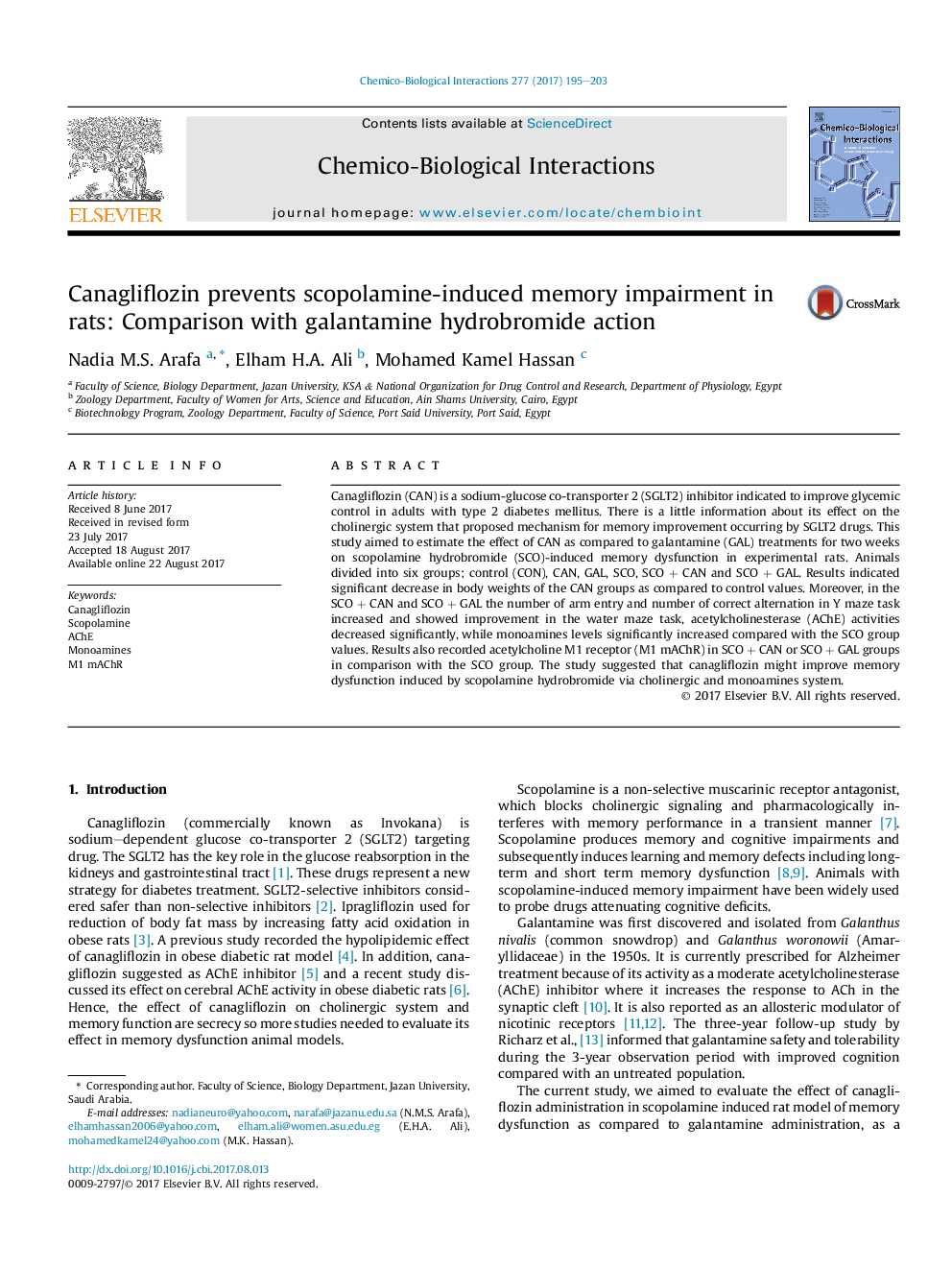| Article ID | Journal | Published Year | Pages | File Type |
|---|---|---|---|---|
| 5559355 | Chemico-Biological Interactions | 2017 | 9 Pages |
â¢The study explore CAN or GAL effects on scopolamine SC memory impairment in rats.â¢CAN or GAL increased numbers of arm entry and correct alternation in Y maze task.â¢CAN or GAL significantly increased AChE activities and monoamines levels.â¢CAN + SC treatment significantly increased hippocampus M1 mAChR.â¢CAN might improve memory dysfunction by SC via cholinergic and monoamines system.
Canagliflozin (CAN) is a sodium-glucose co-transporter 2 (SGLT2) inhibitor indicated to improve glycemic control in adults with type 2 diabetes mellitus. There is a little information about its effect on the cholinergic system that proposed mechanism for memory improvement occurring by SGLT2 drugs. This study aimed to estimate the effect of CAN as compared to galantamine (GAL) treatments for two weeks on scopolamine hydrobromide (SCO)-induced memory dysfunction in experimental rats. Animals divided into six groups; control (CON), CAN, GAL, SCO, SCOÂ +Â CAN and SCOÂ +Â GAL. Results indicated significant decrease in body weights of the CAN groups as compared to control values. Moreover, in the SCOÂ +Â CAN and SCOÂ +Â GAL the number of arm entry and number of correct alternation in Y maze task increased and showed improvement in the water maze task, acetylcholinesterase (AChE) activities decreased significantly, while monoamines levels significantly increased compared with the SCO group values. Results also recorded acetylcholine M1 receptor (M1 mAChR) in SCOÂ +Â CAN or SCOÂ +Â GAL groups in comparison with the SCO group. The study suggested that canagliflozin might improve memory dysfunction induced by scopolamine hydrobromide via cholinergic and monoamines system.
